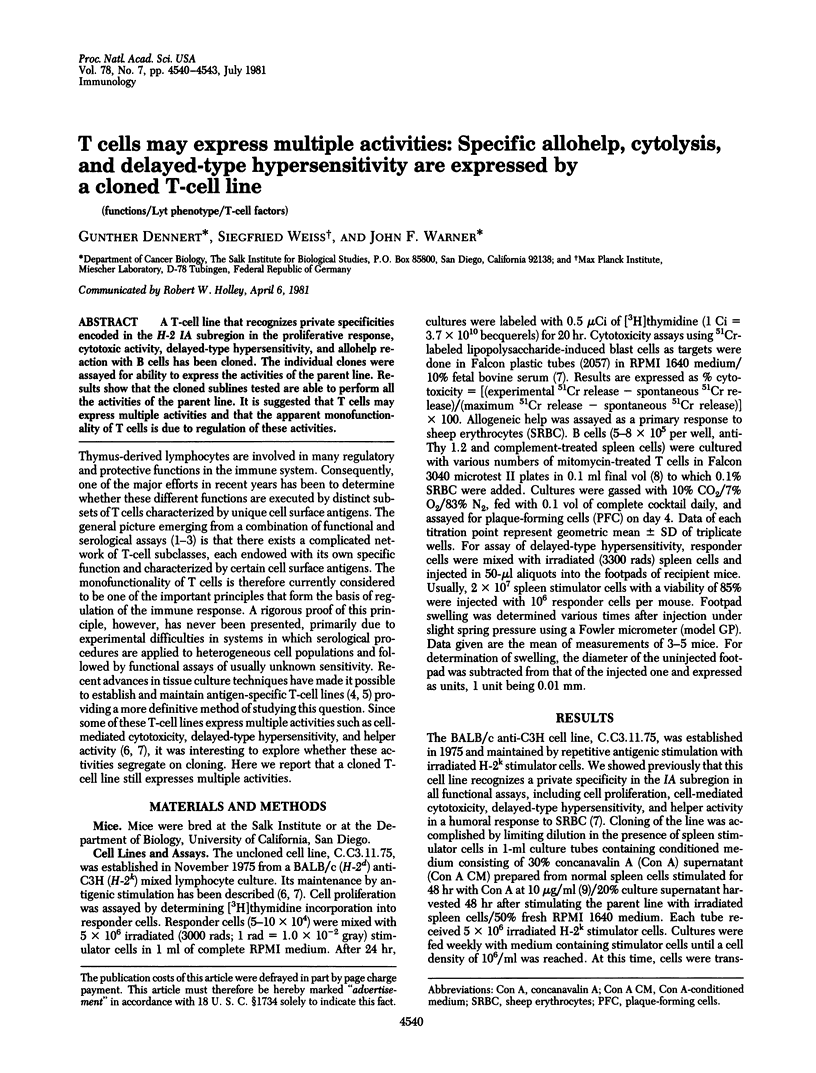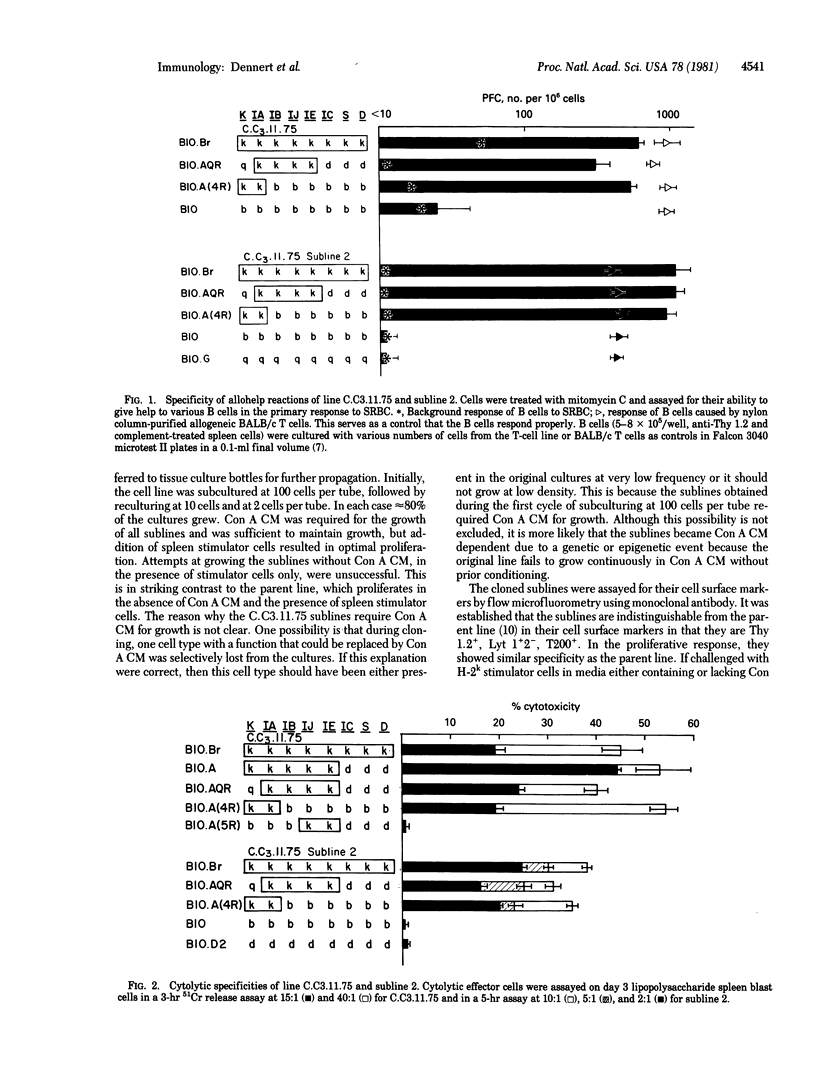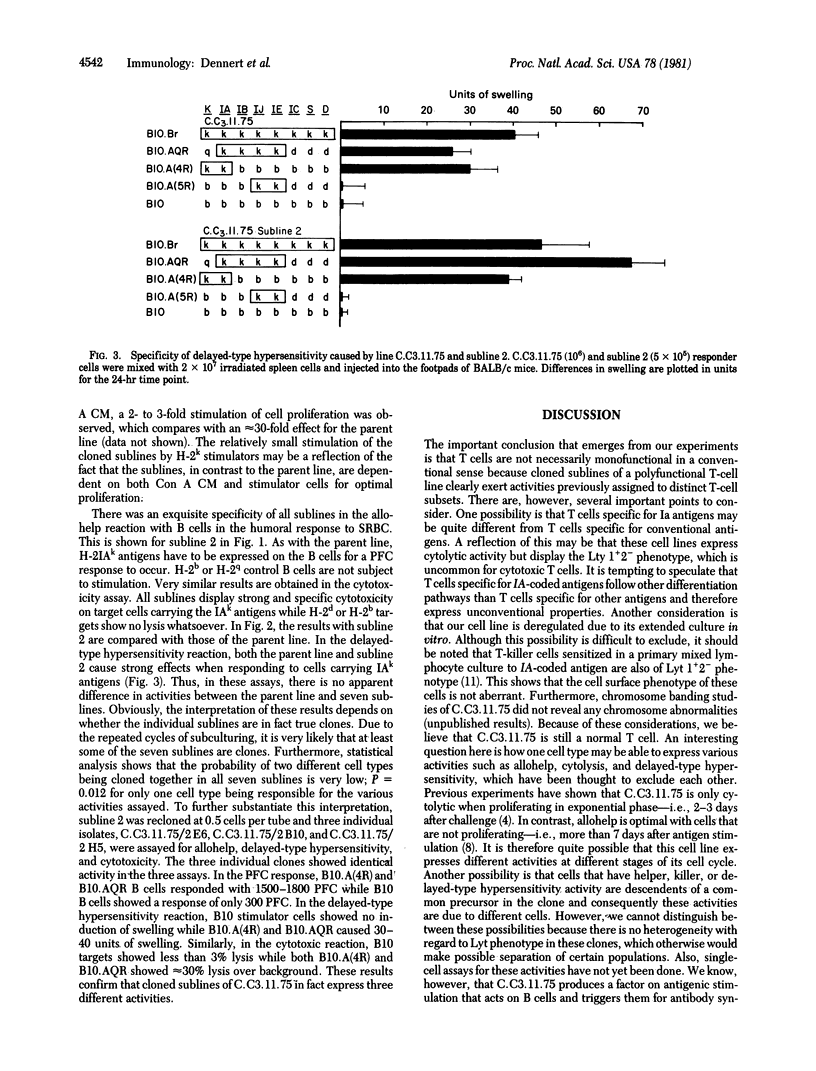Abstract
A T-cell line that recognizes private specificities encoded in the H-2 IA subregion in the proliferative response, cytotoxic activity, delayed-type hypersensitivity, and allohelp reaction with B cells has been cloned. The individual clones were assayed for ability to express the activities of the parent line. Results show that the cloned sublines tested are able to perform all the activities of the parent line. It is suggested that T cells may express multiple activities and that the apparent monofunctionality of T cells is due to regulation of these activities.
Full text
PDF



Selected References
These references are in PubMed. This may not be the complete list of references from this article.
- Cantor H., Boyse E. A. Regulation of cellular and humoral immune responses by T-cell subclasses. Cold Spring Harb Symp Quant Biol. 1977;41(Pt 1):23–32. doi: 10.1101/sqb.1977.041.01.006. [DOI] [PubMed] [Google Scholar]
- Dennert G. Cytolytic and proliferative activity of a permanent T killer cell line. Nature. 1979 Feb 8;277(5696):476–477. doi: 10.1038/277476a0. [DOI] [PubMed] [Google Scholar]
- Dennert G., De Rose M. Continuously proliferating T killer cells specific for H-2b targets: selection and characterization. J Immunol. 1976 Jun;116(6):1601–1606. [PubMed] [Google Scholar]
- Dennert G. Evidence for non-identity of T killer and T helper cells sensitised to allogeneic cell antigens. Nature. 1974 May 24;249(455):358–360. doi: 10.1038/249358a0. [DOI] [PubMed] [Google Scholar]
- Dennert G., Swain S. L., Waterfield J. D., Warner J. F., Dutton R. W. Fine specificity mapping of two allospecific T cell lines: recognition of private specificities in the H-2 IA subregion. Eur J Immunol. 1981 Jan;11(1):62–64. doi: 10.1002/eji.1830110113. [DOI] [PubMed] [Google Scholar]
- Gillis S., Smith K. A. Long term culture of tumour-specific cytotoxic T cells. Nature. 1977 Jul 14;268(5616):154–156. doi: 10.1038/268154a0. [DOI] [PubMed] [Google Scholar]
- Rosenberg S. A., Spiess P. J., Schwarz S. In vitro growth of murine T cells. I. Production of factors necessary for T cell growth. J Immunol. 1978 Nov;121(5):1946–1950. [PubMed] [Google Scholar]
- Shiku H., Kisielow P., Bean M. A., Takahashi T., Boyse E. A., Oettgen H. F., Old L. J. Expression of T-cell differentiation antigens on effector cells in cell-mediated cytotoxicity in vitro. Evidence for functional heterogeneity related to the surface phenotype of T cells. J Exp Med. 1975 Jan 1;141(1):227–241. doi: 10.1084/jem.141.1.227. [DOI] [PMC free article] [PubMed] [Google Scholar]
- Swain S. L., Dennert G., Wormsley S., Dutton R. W. The Lyt phenotype of a long-term allospecific T cell line. Both helper and killer activities to IA are mediated by Ly-1 cells. Eur J Immunol. 1981 Mar;11(3):175–180. doi: 10.1002/eji.1830110304. [DOI] [PubMed] [Google Scholar]
- Waterfield J. D., Dennert G., Swain S. L., Dutton R. W. Continuously proliferating allospecific T cells. I. Specificity of cooperation with allogeneic B cells in the humoral antibody response to sheep erythrocytes. J Exp Med. 1979 Apr 1;149(4):808–814. doi: 10.1084/jem.149.4.808. [DOI] [PMC free article] [PubMed] [Google Scholar]


